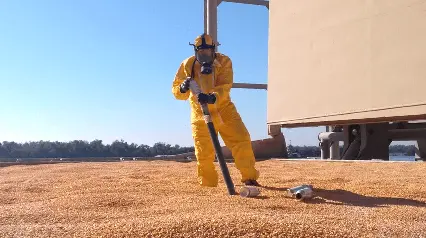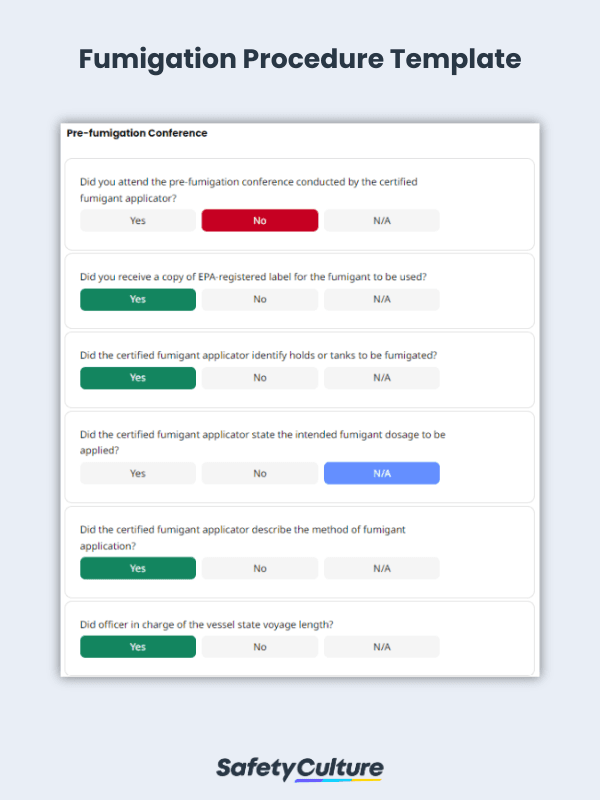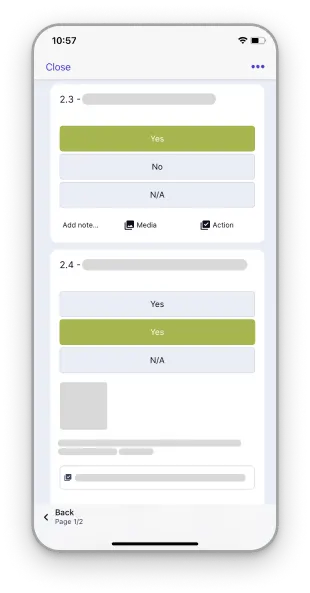What is a Fumigation Procedure Template?
A fumigation procedure template is a tool used in the international trade industry to improve fumigant efficacy and minimize potential hazards such as flammability. Fumigation procedures aim to reduce adverse effects on the environment, impart no harmful residues to the commodity, and prevent costly delays in shipping operations.
What is a Fumigation Report?
A fumigation report is issued by certified fumigant applicators as evidence for the fumigation of grain and raw wood packaging material such as pallets, crates, or cases, and other assets, where applicable. A fumigation certificate is required under ISPM 15, or the International Standards for Phytosanitary Measures, which is administered by the Food and Agriculture Organization of the United Nations.
This article features: 1) the step-by-step process of cargo fumigation; 2) powerful inspection platform to capture photo evidence of fumigation; and 3) free fumigation procedure templates you can download, customize, and use.
Fumigation Procedure in International Trade
According to recent assessments, significant costs and delays in unloading ships and releasing cargo has been increasing for more than a decade. This year, a BMSB-infested cargo vessel ordered to leave the country of importation incurred at least US $200,000 in avoidable expenditure for fuel, provisions, and crew time. To avoid similar incidents, global exporters should adhere to the following USDA-approved fumigation procedure:
1. Suitability verification
Certified fumigant applicators should determine if the vessel, land carrier, or river barge is suitable for stationary or in-transit fumigation. Ships carrying certain wood-packaging material should comply with bark tolerance requirements and its cargo should bear the ISPM 15 mark, including the IPPC symbol, two-letter ISO country code, unique certification number, and treatment abbreviation.
2. Pre-fumigation conference
Safety precautions such as fumigant exposure symptoms, first aid procedures, and phosphine leak checks should be discussed with the captain or officer-in-charge and crew members. The intended fumigant dosage and method of application should also be clearly communicated by the fumigators.
3. Fumigant application
If the recirculation method is used, the blower should move air in the right direction and the perforated and solid tubing should be securely attached to the input and output side of the blower motor, respectively. The captain or officer-in-charge should make sure that the fumigator removes the fumigant from factory-sealed containers or cartons to ensure that it contains the appropriate formulation.
4. Post-fumigation safety
All cargo hold or tank openings should be closed and sealed after application of the fumigant and warning placards installed on all entrances. Ensure that appropriate personal respiratory protection and fumigant detection equipment are readily available and in good working condition. Safe and unsafe areas of the vessel should also be labeled accordingly.
5. Recordkeeping and monitoring
As an official statement of fumigant application compliance, the certified fumigator issues a fumigation report which stipulates the hold/tank number, depth, and cubic capacity, type and quantity of fumigation formulation used, and method of application. Use mobile-ready checklists to regularly monitor the temperature, humidity, or moisture content in cargo holds or tanks to easily identify a potential infestation and mitigate risk to daily shipping operations.



